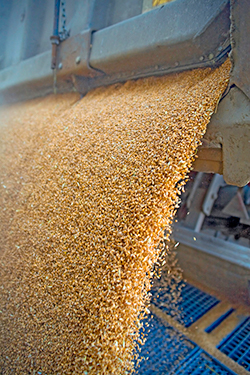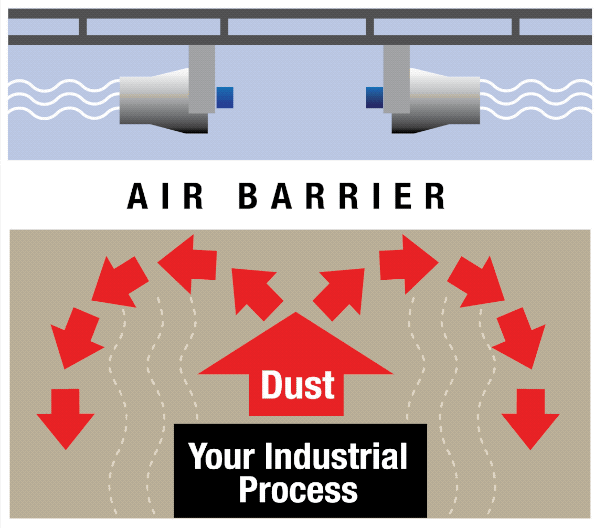Combustible Dust in the Food and Grain Industry
The National Grain and Feed Association reports that “grain dust is the main source of fuel for explosions in grain handling facilities.” This dust is highly combustible, and can cause fires and explosions if the grain dust accumulates on surfaces or creates clouds of dust in the air. Due to this risk, OSHA standards allow a maximum of no more than 1/8 inch of grain dust accumulation in priority housekeeping areas, which include enclosed areas containing grinding equipment or grain dryers as well as any floor areas within 35 feet of inside bucket elevator legs.
 Despite these standards, the grain industry continues to battle combustible dust events. According to OSHA reports, over the past 50 years, grain handling facilities in the United States have experienced over 500 explosions, injuring nearly 700 people and killing 180. In 2018 alone, there were 12 grain dust explosions.
Despite these standards, the grain industry continues to battle combustible dust events. According to OSHA reports, over the past 50 years, grain handling facilities in the United States have experienced over 500 explosions, injuring nearly 700 people and killing 180. In 2018 alone, there were 12 grain dust explosions.
Nationwide, food products made up 43% of the materials involved in combustible dust fires and explosions in 2018, according to the 2018 Combustible Dust Incident Report. Within the food industry, there were 21 combustible dust fires and nine explosions.
Such incidents can be caused by problems such as a hot bearing, overheated motors, misaligned conveyor belts, or even a spark from a bucket elevator. With the significant amount of dust that is generated by loading and processing grains, it’s a challenge for facilities to keep up with the proper housekeeping measures required to avoid combustible dust events.

How SonicAire Can Help
What the food and grain industry needs is a proactive solution that prevents the accumulation of dust. SonicAire provides that solution. SonicAire’s precision industrial dust control fans are engineered to maintain clean food and grain facilities and mitigate the risk of combustible dust events.
The SonicAire Solution
SonicAire proprietary technology combines two methods to control dust flow.
SonicAire fans use high-velocity airflow to clean overhead areas. The strength of this airflow effectively prevents the accumulation of combustible dust or grain particles on overhead structures in the facility.
Typical airflow includes upward thermal currents which naturally lift and carry particles to overhead areas of facilities, where dust quickly accumulates and can become a fire hazard. SonicAire industrial dust control fans prevent these upward thermal currents from holding dust in the air.


SonicAire Fans at Work

Put SonicAire to Work for You
With an engineered layout custom-designed for your plant, SonicAire fans will replace high-risk and costly manual cleaning measures, eliminate the need for housekeeping shut-downs and help maintain a clean, safe environment. Use the Learn More form above, at right to request more information or visit our Dust Solutions page to learn more.



